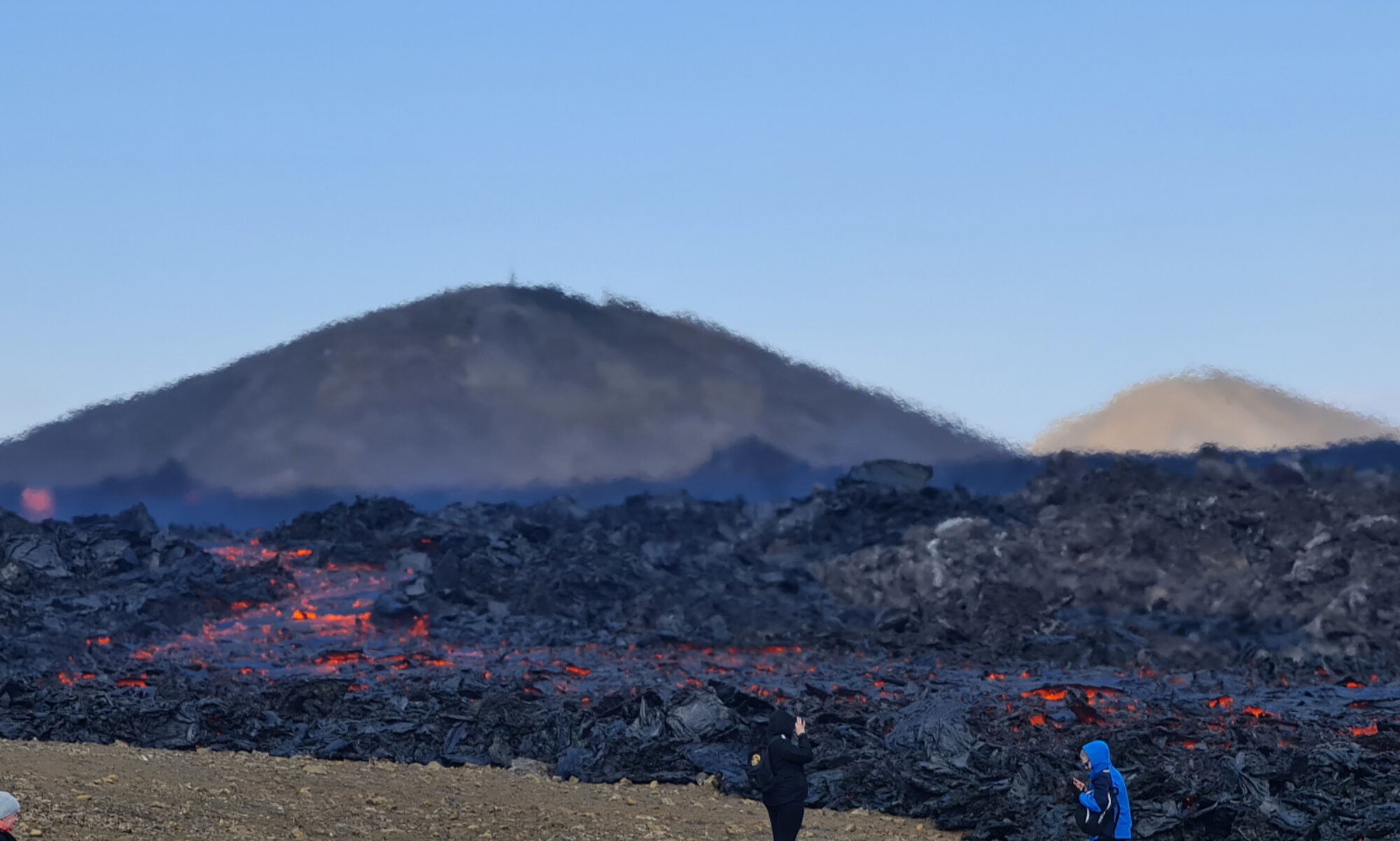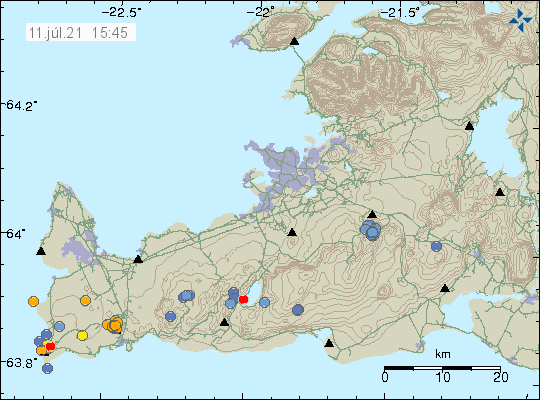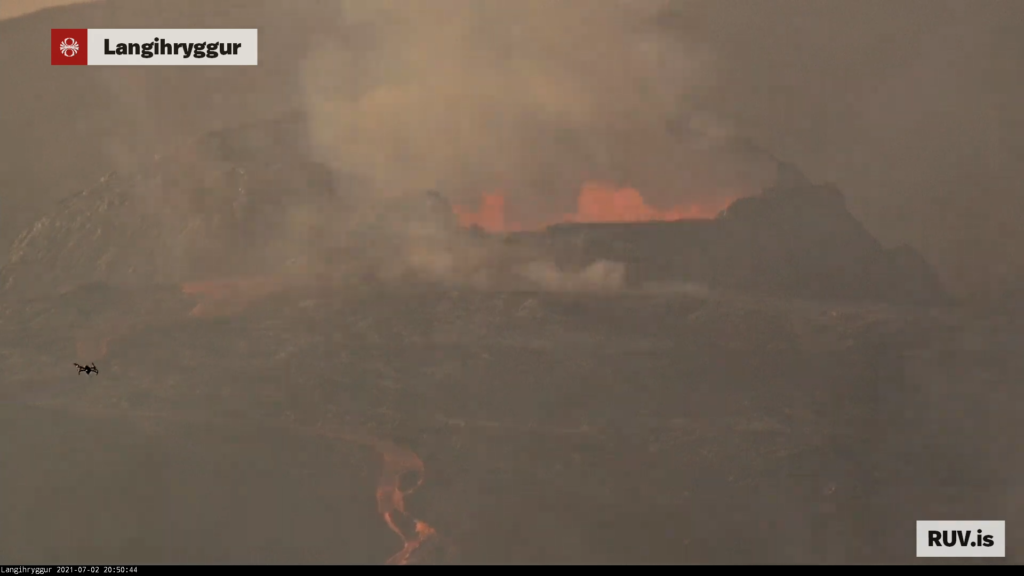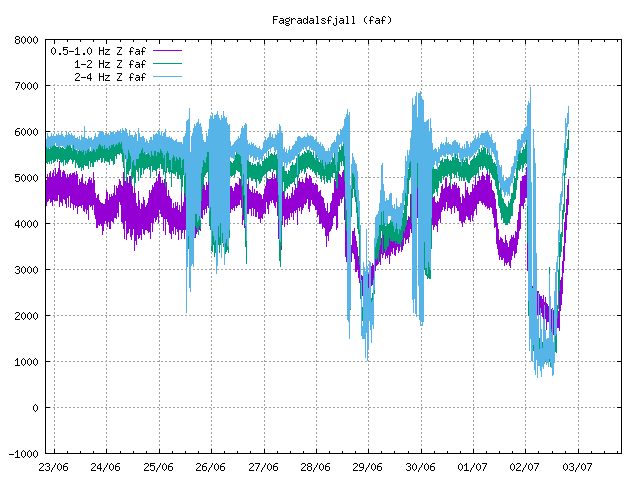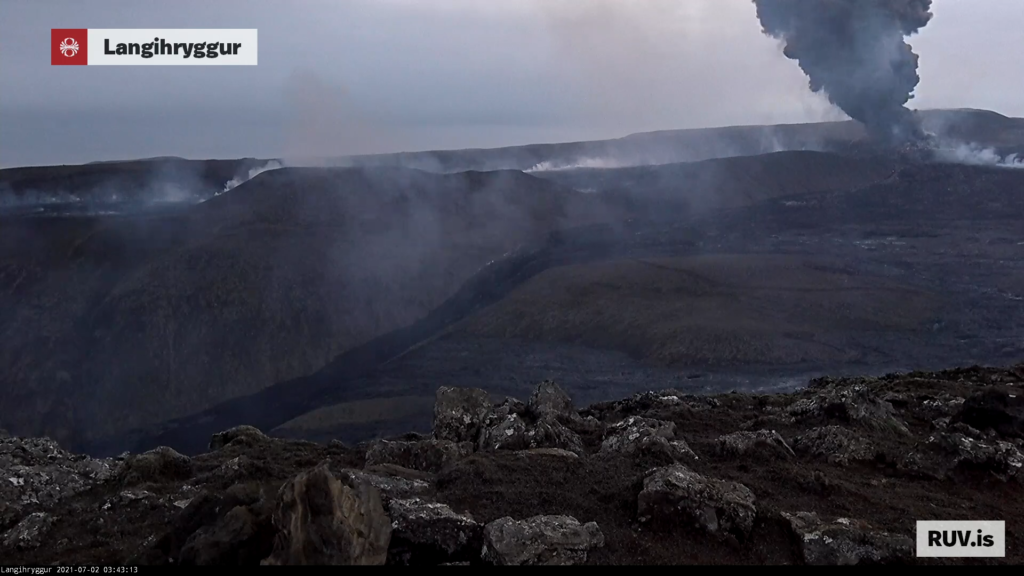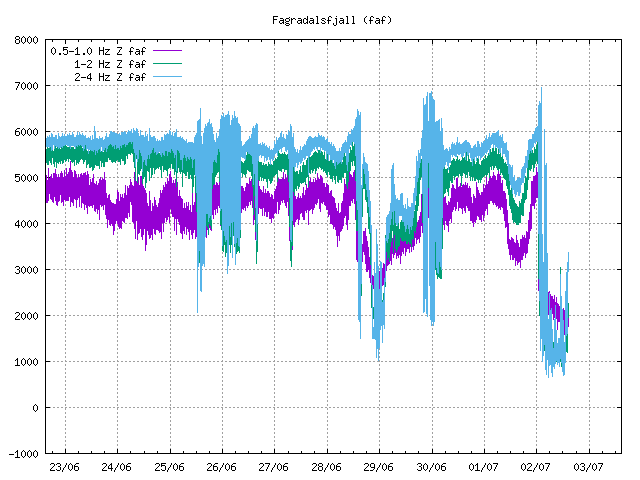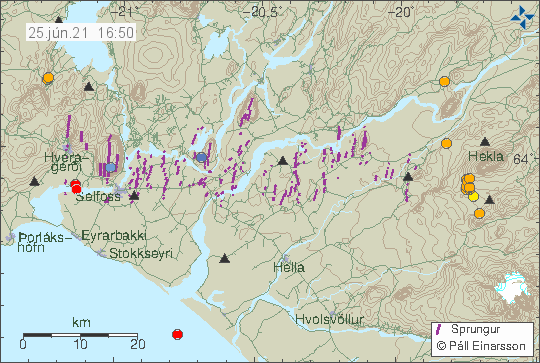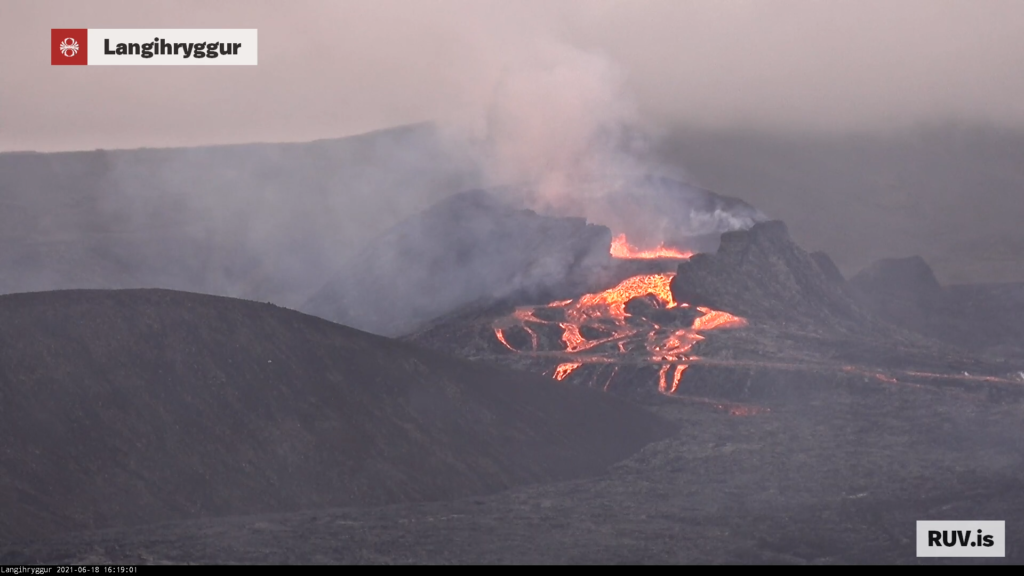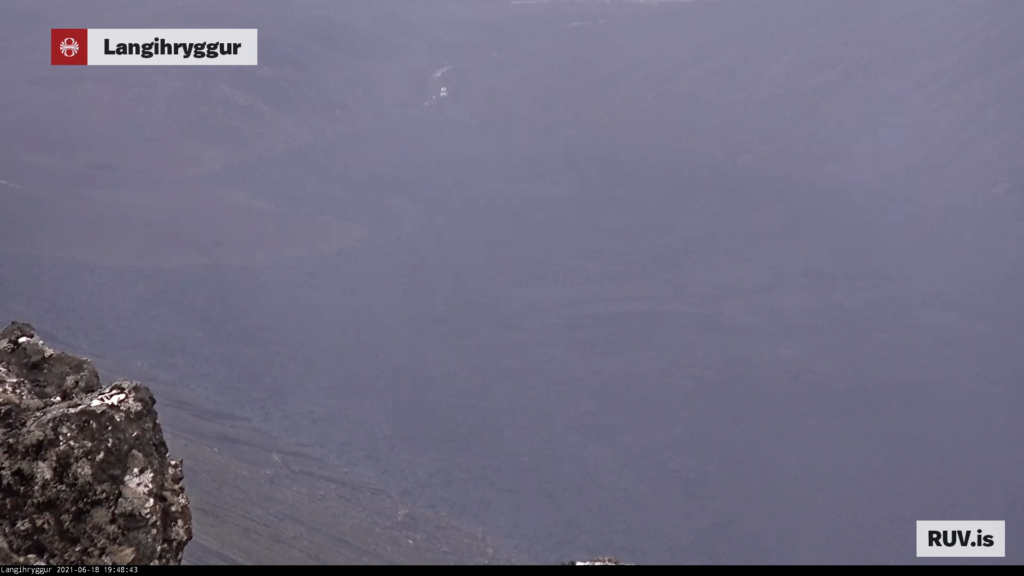Today (21-July-2021) few deep earthquakes took place in Fagradalsfjall mountain that is part of Krýsuvík-Trölladyngja volcano system.
This earthquake activity was not big and the largest magnitude recorded was a magnitude of Mw0,8. Most depth that appeared had a depth of 13,4km.
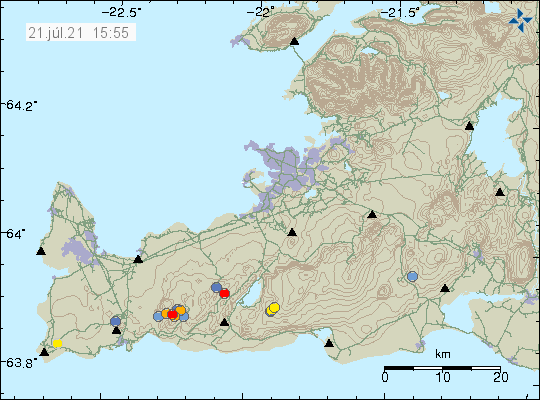
It is difficult to know what this means. What is possibly happening is that more magma is pushing up in the magma feeding that now exist where the eruption has been happening. If that is happening, it can result in new craters or fissure opening up and start erupting. At the writing of this article this earthquake activity seems to be ongoing, but at slow rate and small earthquakes only so far.
Fog continues to block view to the crater and Fagradalsfjall mountain. But harmonic tremor data shows that the Fagradalsfjall mountain eruption is currently not erupting.
